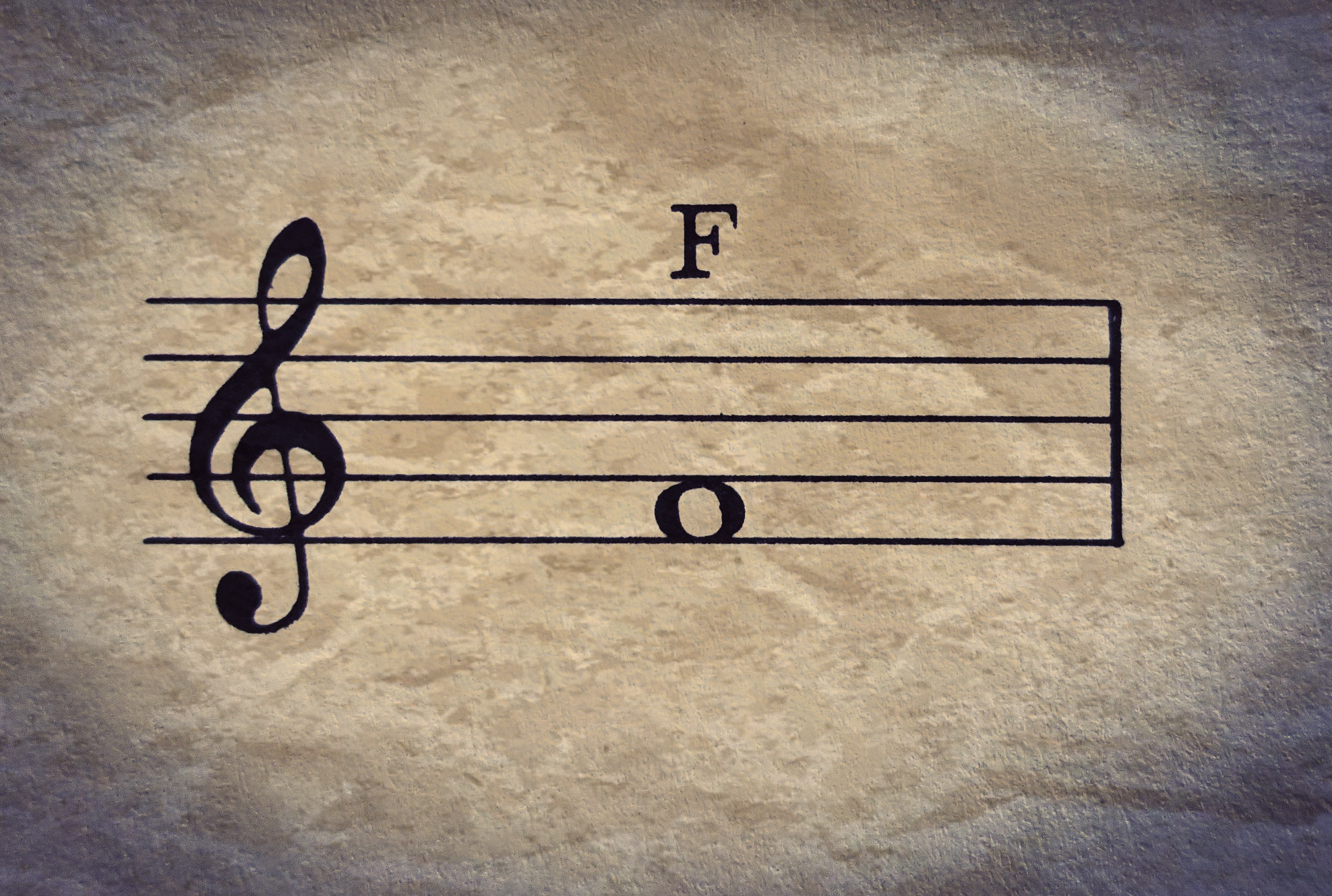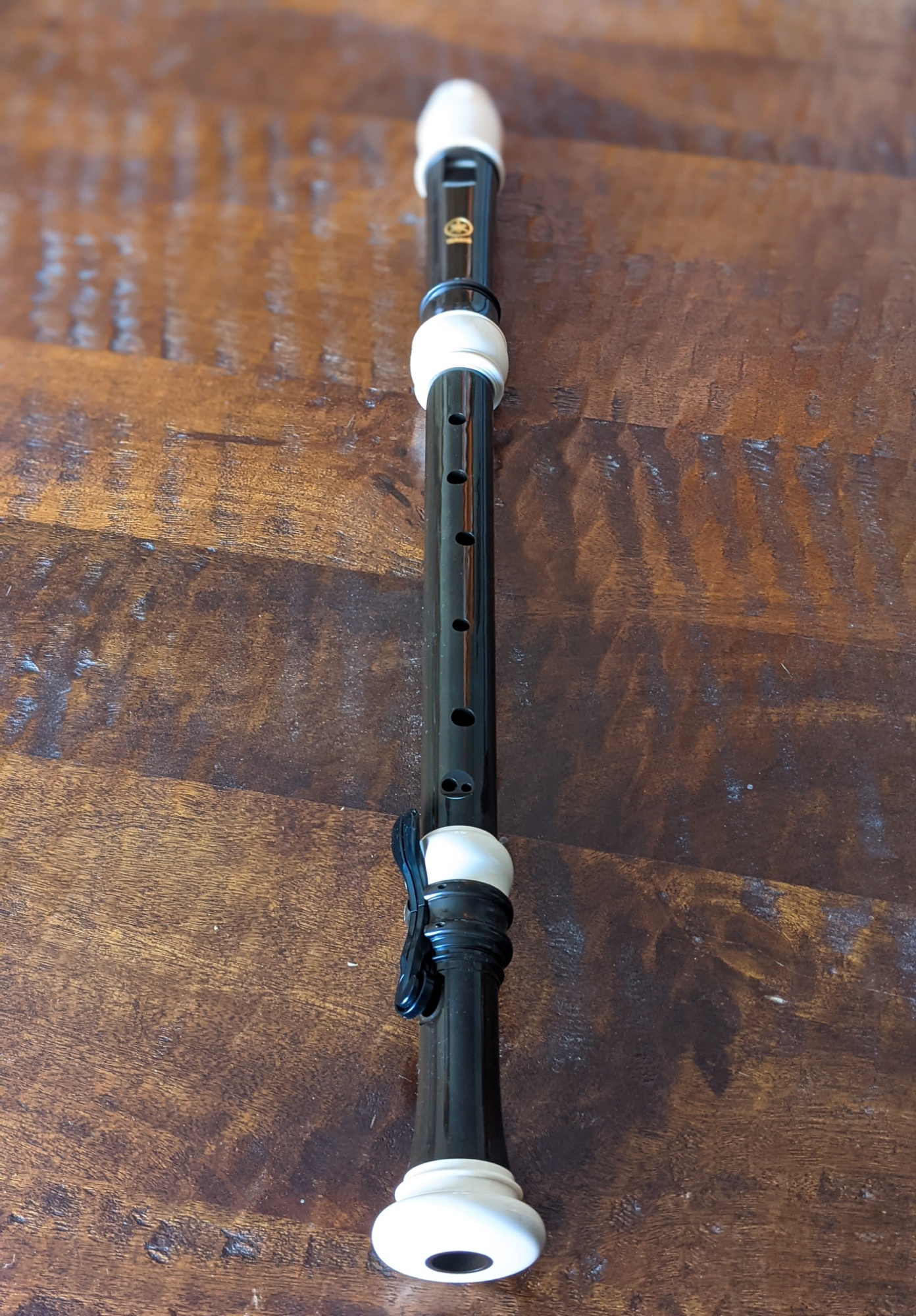
Relative to F, dastardly D was easy to learn. F requires that all holes except the fifth be covered, and the bottom hole(s) are actually covered using a key due to the reach required. Playing this new note at first, it sounded pretty effing bad.
Allow me back up a bit: the very first time I attempted an “F”, it was on a different plastic tenor recorder. Sadly, the key on the bottom hole(s) actually didn’t completely cover it, even when the key was forcefully pressed down. And repeated, forceful (and ultimately, ineffective) depressing of the key simply caused a terribly off-key note and pretty vicious finger cramps. The recorder wasn’t cutting it – to even have a fair chance of playing a decent F, a new instrument was needed.
On to recorder #2: now confident that the tenor recorder was (as I had suspected) the one I’d want to learn to play first, I was willing to spend a bit more and get a Yamaha. The YRT-304B is also plastic and affordably priced (can be found at around $70). Instead of black and ivory, it comes in a dark brown and ivory. The superiority of the fit and finish is immediately apparent when handling the instrument, and the tone is enchanting. The fact that some professional recorder players practice on and recommend the plastic Yamaha models was just icing on the cake.

Even on my new Yamaha, F is sometimes difficult to nail – not because of the instrument’s design, but because I’m a novice player. Sometimes, my thumb will lift, nearly imperceptibly, from the hole and F sounds squeaky; other times, my breathing isn’t right (this model does have a curved windway, too) and the note is off; still other times, reaching for the lowest holes or transitioning (especially from G to F) results in slight misplacements and a bad note. The solution? Practice, practice, practice, stretch fingers, practice some more. I know that it’s only by repeating the fingering and adjusting my breath to get the proper note that it will, eventually, become as natural and consistent as playing an A or high C has become.
Are there moments of frustration, even exasperation? Of course. Perfectionism, uninvited and unwelcome, can quickly cast a pall on a learning session, turning what should be fun and intrinsically rewarding into castigation by those vitriolic inner voices: why do you keep playing the wrong note?? You’re still practicing F?? You ran out of breath on the last note, and it’s only a short practice tune!
But it’s a simple exercise to simply tell the critics to STHU. Yep. And, then, to remind yourself that you have actually come quite a distance in the past weeks…and you can – and do – make music! Remember how the transitions in “Jingle Bells” (particularly in the third and eleventh measures, the “jingle all the” parts) were a troublesome trip-up for several sessions, but now are almost easy? And F – it’s getting there. I can now produce a clear, lovely note most of the time, and when I don’t, I can figure out why and fix the problem.
Learning is humbling, especially if you’re of the Type A, perfectionistic bent. Importantly, this learning journey has also helped me learn to be kinder to myself: I try to remind myself, periodically, of how far I’ve come (from not knowing what a recorder was late last year to being able to play simple pieces now) and that my progress is where it should be for me. It may seem a little cheesy, but when I have a frustrating session, I take a moment to go back to earlier lessons in my book and play pieces I’ve already learned – and it really illustrates how far I’ve come. I am better today than I was yesterday!
Thinking about learning to play an instrument? The recorder is a great place to start, and Team Recorder has a wealth of helpful info, including videos!

One thought on “Notes: Relative To F…”
Comments are closed.